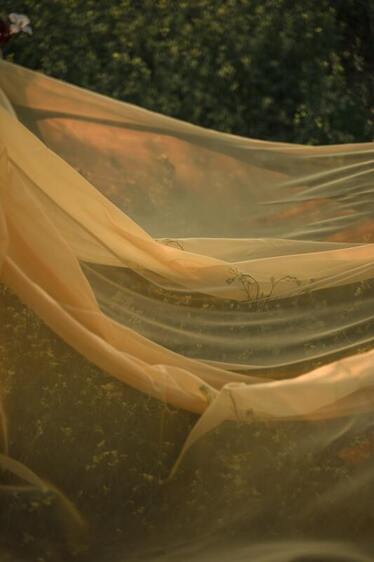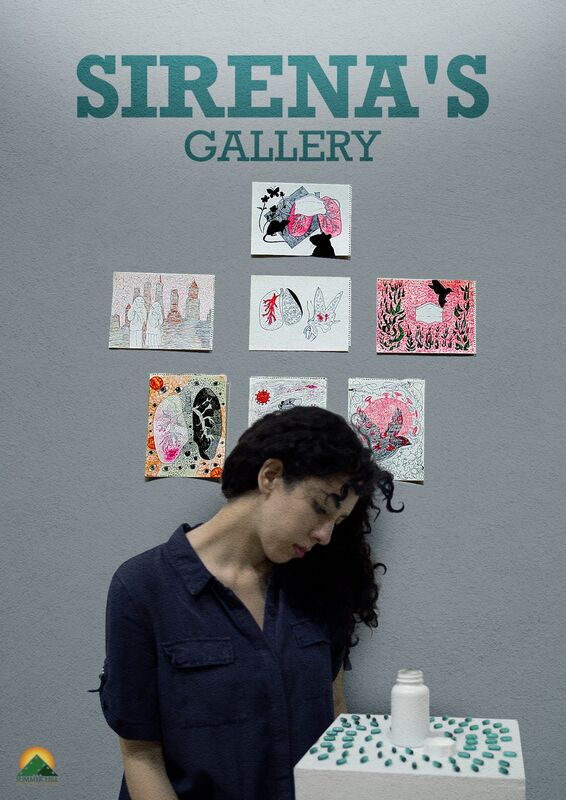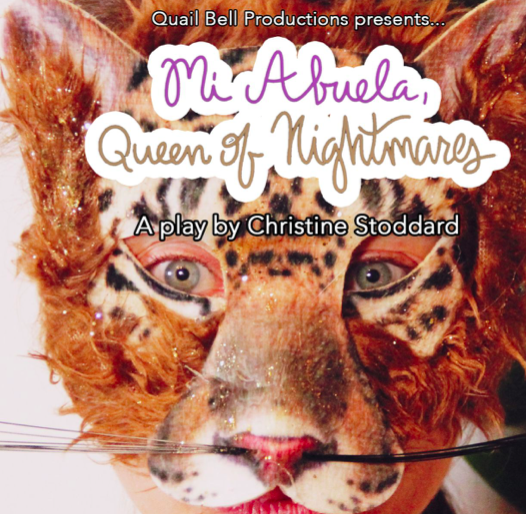|
The Breadcrumbs widget will appear here on the published site.
Legs. They’re what I notice most often about other women, aside from face and hair and outfit and all the other things we love to judge. Lest you think I have ulterior motives, I’m not trawling for a conquest or stalkee. I’m a straight, cis, aging Gen X-er with a tidily manicured set of body image issues. A 5’9” size 16 sort of woman: bigger than some, smaller than others, and utterly average by American standards of measurement. I’m just kind of hung up on legs. On a recent episode of Ted Lasso, I watched in awe as a fellow tall Gen X female (actress Hannah Waddingham) received a very enviable foot massage from an attractive Dutch fellow on his gezellig houseboat. Their sexy subplot was moving right along but all I could think was LEGS.
Toned, tanned, and ten miles long, Rebecca/Hannah’s stems tapered to graceful ankles and toes tipped in bombshell red polish. “Look at them!” I breathed reverently, and then looked down squint-eyed at my own. Granted, I couldn’t actually see my skin, swathed as it was in sweatpants. But I knew what those pants were hiding: a pair of pale, gelatinous, blue-veined and altogether uninspiring legs. There’s a reason I’ve refused to wear shorts for the past two decades. In that moment I was 100% leg jealous, and not for the first time. When I eyeball any other woman’s appendages, it’s to mentally pin them on a wall next to my own and whip out a scorecard. My legs pull very low numbers. *** It wasn’t always this way. As a child I never gave my limbs a thought. They did whatever I asked them to, carried me across playgrounds and up trees and that was more than enough. So when did I internalize this poison? When did I take to heart the message that my legs were not good enough to see the light of day? And why am I still believing this bullshit at age 50, refusing to meet my own eyes in the mirror? I know I’m not the only one. I see you, my fellow middle-aged females. I see you at the beach in your one-piece, sitting on your towel with a cover-up slung casually across your thighs as everyone else runs squealing across the sand to the water. “Nah, I’m good here,” you holler when they turn and wave you in. “I’ve got my book!” And you sit and swelter while everyone else splashes in the surf. God forbid you stand up and someone sees the dimples behind your knees. I see you with your leggings layered beneath that short summer dress. I know exactly how hot you are, how your shins long for a breath of air, a kiss of sun. I see you walking stiff-necked past those full-length mirrors, past shop windows, past every genus of shiny surface, pretending you’re a vampire. No reflection, no reflection. The shame is strong with us. It’s so strong. For me, the shame is deep and layered. I grew up in a fundamentalist religion in which women’s bodies were problematic in a whole different way. We had to cover up to protect our own virtue – and that of the boys and men around us, lest they lust for our legs. Our clavicles. The knobs of our shoulders. Beauty was vanity, the preachers all said. Women must adorn themselves not in gold or jewels or expensive clothes, but with modesty, with sobriety. With shamefacedness. That was the actual word in the Bible: shamefacedness. (You can google it: 1 Timothy 2:9, King James Version.) The idea was that our sights should be set on God at all times. We should live our lives to glorify Him and Him alone. Showing off your body was not just attention-seeking, it was willfully tempting your brothers in Christ to stare at you and sin. Not only was such behavior shameful, but the mere having of breasts and hips and legs was dangerous. What if you bared them accidentally and some boy stumbled straight into lust? Can you imagine the horror! Could you blame him for whatever happened next? I wore my shame well. I coated my bones with it. Long before I got my hands on a Sassy or Seventeen magazine that showed me how to score my looks, I was convinced of my own unworthiness. It wasn’t much of a leap from there to hating my legs. When I left the oppressive world of that religion in my 20s, shame was a keepsake I took with me. I bubble-wrapped it, taped it in a box and shelved it in deep storage. As if ignoring it could make it disappear. I shed the dress code I grew up with, the long skirts and ballooning culottes (the kind that were never in fashion). It was the 90s; I embraced all kinds of fishnets and crop tops and low-rise jeans. I bared my midriff and – for a few glorious golden summers – I got my legs out. I was young and firm and full of just enough rebellious energy that I was eager to see how far I could push a hemline. After years of believing my body was trouble just because it came attached to a vagina, I relished this newfound siren power. It felt like freedom. A surprising number of people liked to look at me, and I found some sort of validation in their regard. Did I believe I was beautiful? No. Maybe. Sometimes, on the dance floor beneath the blue lights. I found that I no longer believed beauty was something to cover up. Unbound from the repressed confines of religion, beauty became something to aspire to. I bought the magazines. I watched the movies. I mimicked the confidence. I pretended I believed I was worthy. But I hadn’t rid myself of my shame, and eventually it fought its way free of that box. In the darkness it had evolved just as I had. Now, instead of feeling shamefaced that my body was too shapely and revealing, a tool of the devil that led hapless men straight to sin, I was ashamed that my body wasn’t shapely enough. You know how it goes, I know you know. No matter who we are, we feel some measure of this same shame. We’re too short too tall too fat too thin too dark too light too muscled too soft too little too late. We duck our heads, bow our shoulders, cover our legs. We apologize for no reason at all. I only had a few years of wild body abandon before I came to believe that other bodies — other legs, in particular — were worthy of being seen. But mine were not. Mine were offensive. So I hid them away in silence. And they’ve stayed hidden for 23 years. *** It’s not like we don’t talk about our culture’s obsession with body image. We recognize it now, we call it out, we start body positivity movements and big brands like Nike tell us they are For Every Body. But most of the time, we’re fixing our focus on youth. It’s such an American thing to do. And it’s not wrong – young girls and teenage women are inundated on all sides with messaging about what pretty “should” look like. They’re slapping on filters and researching butt lifts and hating themselves because they don’t look like a Kardashian (neither do the Kardashians). At least half of the 13-year-old girls in the United States are unhappy with their bodies. By the time they all turn 18, that statistic jumps from 53% to 78%.* I worry for my own 12-year-old daughter. But then I look at myself, unwilling to wear a pair of shorts even in the safety of my own home. My words say, “You’re perfect the way you are.” My actions say, “Real women hate their legs.” Maybe legs aren’t your thing. Maybe it’s your arms. Or your butt. Your back. Your nose. We all have a favorite body part to hate. Eating disorders are not just for teenagers: Women over 50 commonly report eating issues, and 62% of them say their shape or their weight “negatively impacts their lives.”** As menopause wreaks havoc with our hormones and the person in the mirror no longer looks like the person in our heads, all those decades of body image indoctrination come barreling down. The weight is suffocating. We can’t think around it. The other day I met a friend for lunch and when she showed up in a khaki shift and red sandals, looking all breezy with her bare calves. I told her she looked amazing. “Oh,” she flapped a disagreeing hand at me. “Thanks, but I really hate the way my stomach pooches out.” I assured her she looked beautiful. She did look beautiful! But she didn’t believe me. And I returned the favor when she complimented my own outfit, my graying hair. I didn’t believe her, either. We women are often great at seeing the good in others. We’re not so great at turning that same kindness on ourselves. I’m sick of it. We only get so much time to spin around on this blue ball, and this is how we’re going to spend it? Held hostage by a lifetime of ridiculous beauty standards? My husband’s grandmother lived to be 108. On one visit with her when she was younger (105), she regaled us with stories of her newest boyfriend. Then she looked at me, winked, and patted her small, soft belly. “I gotta lose some weight, though!” she confided. It never ends. And it won’t until we stop dealing ourselves in to the game. *** Last week I got butterflies in an H&M dressing room as I shucked out of my generously-sized jeans and pulled on a decidedly un-sexy pair of knit shorts. I forced myself to look at the full-length mirror. There were three of them, helpfully angled to show me how I looked from the front, side, and back. For a moment I wished for a brown bag to breathe into. But then I said, “Nope. I’m not doing it.” Instead, I met my eyes in that mirror and told myself the truth. No, I didn’t look great. I have inherited the wide Witmer thighs and a tendency to cankle. Those 20-whatever lbs I gained during the pandemic lockdowns still sit heavy on my hips, my belly, my breasts. I am no longer in my prime. I look like a middle-aged woman. I am a middle-aged woman. But I am still hale and healthy. My legs might not be pretty, but they work just fine. They take me all the places I want to go. And the shorts fit. They were comfortable, stretchy. I’d be grateful for them in the summer heat. And so, reader, I brought the shorts home. Not only that, but I’ve been wearing them. At home: mowing the lawn, walking the dogs. In public: picking up a package at the post office, dashing in to the grocery store. Let’s be real: simply exposing my legs isn’t an instant cure. After decades of habitual humiliation, I can’t flip a switch and suddenly love the way I look in shorts. I’m trying to love the way I feel instead. Every time I put on shorts I am making a deliberate choice to prioritize the things that matter, like my own physical comfort, instead of caving to knee-jerk mortification of the flesh. Desensitization helps. The more I look down and see my bare skin in all its mundane imperfection, the less shocking it is. Yep. There are my legs. So what. We can do this, my fellow had-it-up-to-here women. We can choose to put our shame away and take out our legs. Or our arms. Our bellies, our thighs. The parts we’ve been hiding all this time. They’re ours, after all. They’re ours and we owe this to ourselves. To that small shamefaced girl inside each of us. To our endlessly observant daughters. We are worthy of shorts in the summertime. Our bodies are enough just as they are. *** Yesterday my daughter and I went for a hike. As I sat on the steps to lace up my tennis shoes, she glanced down and said, “Your legs are getting tan, Mom.” “They are, aren’t they,” I said, stretching them out to examine. I looked over at her bare legs, colt-like in their pre-teen ranginess. “Yours are, too!” I said. And then we walked out the door like our legs were no big deal. Like they were there to carry us wherever we wanted to go. _________________________ *According to National Organization for Women ** Psychology Today, Body Image Issues Are Not Just for Young Women (August 5, 2022)
0 Comments
CommentsYour comment will be posted after it is approved.
Leave a Reply. |
AuthorWrite something about yourself. No need to be fancy, just an overview. Archives
March 2024
Categories
All
|



 RSS Feed
RSS Feed






